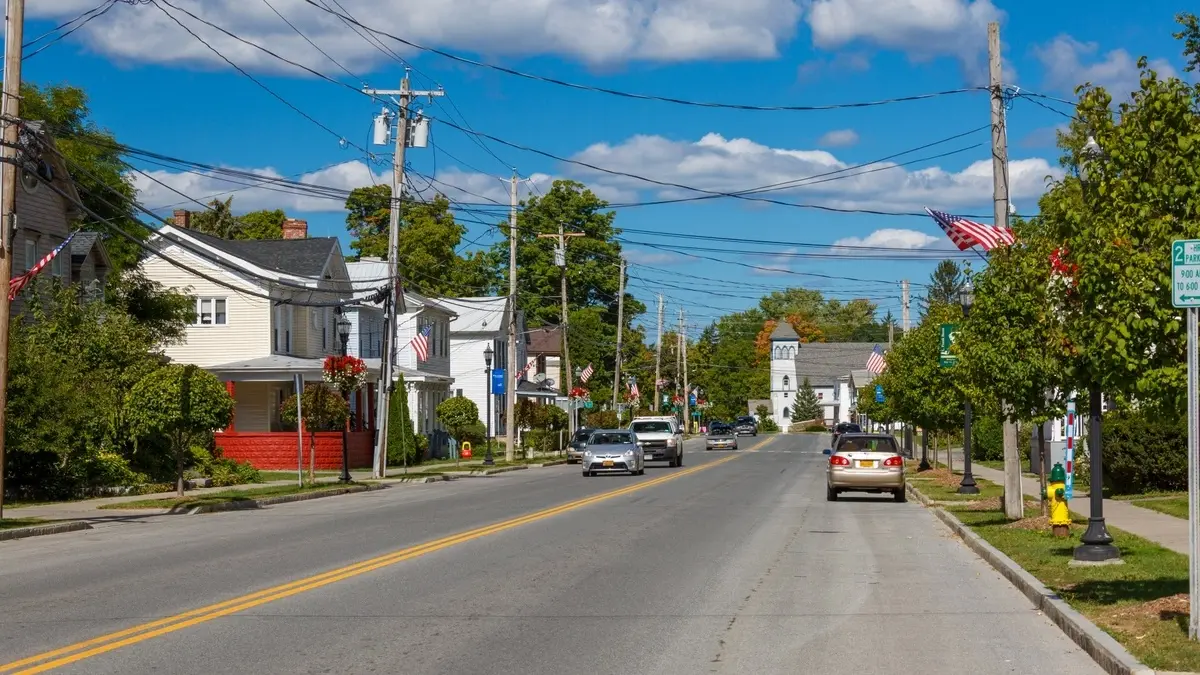Understanding and improving Tribal governments’ and non-entitlement units’ experiences with the State and Local Fiscal Recovery Funds program

Residential street
What priority outcome did we evaluate?
As part of the American Rescue Plan Act of 2021 (ARP), the U.S. Department of the Treasury (Treasury) is administering the State and Local Fiscal Recovery Funds (SLFRF) program, which provides $350 billion in funding for eligible state, local, territorial, and Tribal governments (recipients) to support their response to and recovery from the COVID-19 public health emergency. More than 500 Tribal governments¹ (Tribes) and approximately 27,000 small cities and towns – referred to as non-entitlement units of local government (NEUs)² and comprising nearly 40% of the total U.S. population – were respectively allocated $20 billion and $19.5 billion of this funding.
The size and scope of this transfer presents an unprecedented opportunity, but also a challenge to implement, owing to diverse capacity for implementation and reporting. For NEUs, SLFRF is the largest one-time transfer of federal funds in nearly 40 years and, for many NEUs, SLFRF was the first time they needed to report on their use of federal funds.³ In order to promote transparency, responsibility, and equity in the use of funds, recipients must submit spending reports to Treasury.
What did we do?
We collaborated with Treasury to understand Tribes’ and NEUs’ experience using and reporting on their SLFRF funds. Given the lack of data and the number and diversity of Tribes and NEUs, we used qualitative and quantitative methods to undertake an in-depth study of Tribes’ and NEUs’ experience. We consulted with members of Tribal nations and Treasury’s Tribal liaison team on the research design, questionnaire, and synthesis.
What did we learn?
Qualitative results
The qualitative analysis revealed that there is significant variation among Tribes and NEUs, which created potential challenges for some Tribes and NEUs as they worked to allocate and report on their use of funds. Local contexts range from remote locations, where costs are high, there are no dedicated administrative staff, materials/contractors are scarce, and internet connectivity is limited, to large and prosperous urban jurisdictions with dedicated administrative staff. Many Tribes and NEUs shared that they felt concerned about receiving and misspending federal funds. Tribes and NEUs relied on Treasury’s resources to learn about and implement SLFRF. And, although many NEUs and Tribes experienced challenges with registering for Treasury’s reporting portal, they appreciated the support provided by Treasury and, once in the system, most found reporting to be straightforward – largely owing to Treasury’s streamlined reporting requirements.
Quantitative results
The quantitative results support the qualitative findings showing that Tribes and NEUs are diverse, with average population sizes of 48,758 and 27,064, respectively. Tribes and NEUs submitted a significant number of Help Desk requests for technical support from Treasury, reflecting the challenges they experienced when registering and submitting their spending reports. On average, Tribes submitted six Help Desk tickets, NEUs submitted three, and other recipients submitted four. At the same time, not all Tribes and NEUs required the same level of support, as about 30% of all Help Desk tickets submitted by Tribes or NEUs came from just 10% of Tribes and NEUs. Despite the apparent challenges Tribes and NEUs faced submitting these reports, Treasury was able to respond to questions with sufficient expediency to not cause bottlenecks. As shown in Figure 3, about 60% and 70% of all Help Desk tickets were submitted within 20 days of the April spending report deadline, but Treasury was largely able to sustain Help Desk support for recipients despite the large surges in demand around key deadlines.
Figure 3. NEU help desk tickets and resolution times before and after the April 2022 submission deadline

Expand image
Note: Blue markers represent the average number of new Help Desk ticket submissions per day, where days are centered relative to the April 2022 deadline grantees had to submit spending reports; markers are connected by a LOWESS line. Red markers represent the average number of days it took Treasury to close Help Desk ticket submissions per day of ticket submission, again centered relative to the April 2022 deadline.
Treasury and OES undertook this analysis early in the life cycle of the SLFRF program. Using these findings, OES and Treasury will identify methods to further support Tribes and NEUs to most effectively use and report on their SLFRF funds.
Notes:
- As defined in section 602(g)(7) of the Social Security Act, as added by section 9901 of the American Rescue plan Act of 2021.
- Non-entitlement units of local government (NEUs), defined in section 603(g)(5) of the Social Security Act, as added by section 9901 of the American Rescue Plan Act of 2021, are local governments typically serving populations of less than 50,000. NEUs include cities, villages, towns, townships, or other types of local governments.
- Prior to ARP, the U.S. last implemented a General Revenue Sharing (GRS) program in 1972 that expired in 1986. GRS is commonly defined as a program of federal transfers to state and local governments that does not impose specific or categorical spending requirements on the recipient government. See the Congressional Research Service report on General Revenue Sharing.
Verify the upload date of our analysis plan on GitHub.


